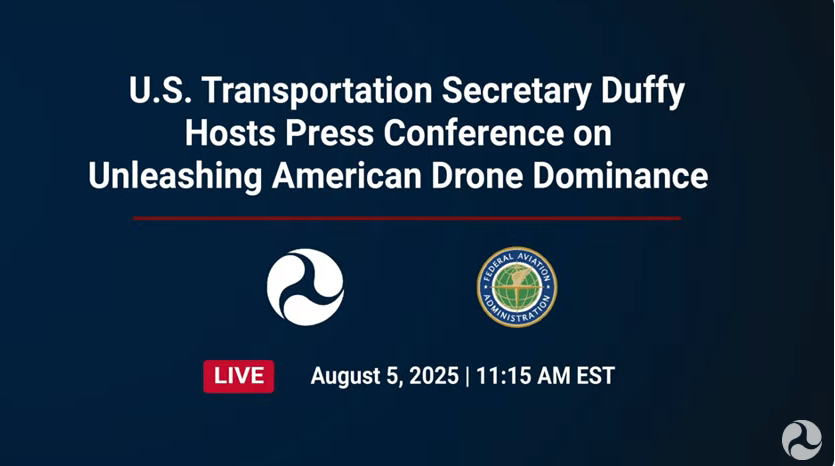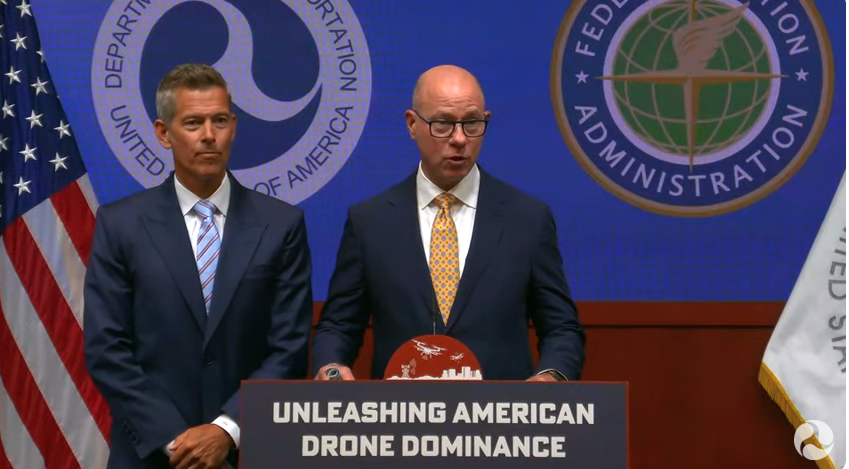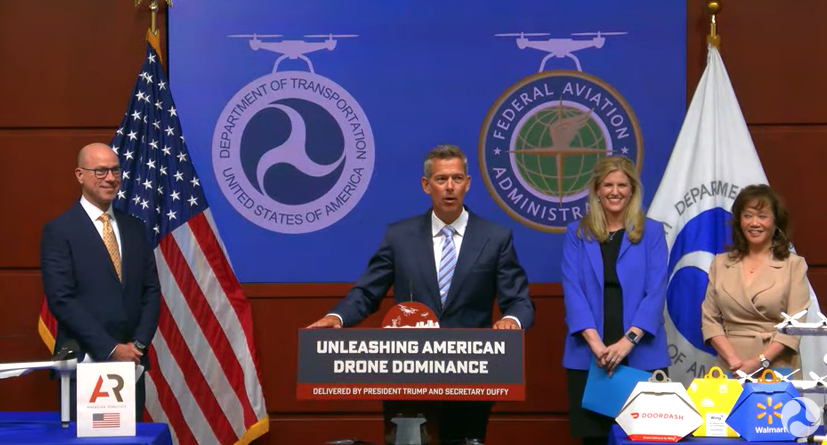Today, the Federal Aviation Administration (FAA) unveiled a landmark Notice of Proposed Rulemaking (NPRM) aimed at unlocking routine, large-scale Beyond Visual Line of Sight (BVLOS) drone operations across the United States. As the commercial, public and recreational use of drones rapidly expands, from package delivery and precision agriculture, to public safety and infrastructure inspection, the need for a scalable, risk-based regulatory backbone has never been more pressing. Here’s a deep dive into some of the most pivotal elements of the FAA’s BVLOS NPRM, crafted to accelerate innovation while safeguarding the skies.
A New Performance-Based Regulatory Framework
The NPRM responds to clear statutory directives in the FAA Reauthorization Act of 2024 by proposing a comprehensive, performance-based approach. Instead of one-size-fits-all rules, it recognizes the diversity of drone operations and focuses on enabling routine, safe, and flexible BVLOS flights at low altitudes. This framework aims to serve a wide spectrum of missions, including commercial deliveries, agriculture, public safety, aerial surveying, training and demonstration flights.

Establishing Two Regulatory Pillars: Parts 108 & 146
Two entirely new regulatory parts will anchor these operations:
- Part 108 will spell out the general rules and operational requirements for all BVLOS UAS, including airworthiness standards, operational protocols and safety mandates.
- Part 146 targets the certification and oversight of Automated Data Service Providers (ADSPs), such as future Unmanned Traffic Management (UTM) providers that enable automated airspace deconfliction and safety-critical data flows.
By structuring oversight in this dual fashion, the FAA aims to foster a more robust, modern and collaborative regulatory environment.
Tiered Authorization Types: Permit vs Certificate
Recognizing that drone missions vary widely in complexity and risk, the FAA introduces two authorization pathways:
- Operating Permit: Designed for lower-risk, smaller-scale missions. These are streamlined approvals, ideal for operations using a limited number of smaller UAS, subject to tighter restrictions.
- Operating Certificate: Required for more complex, higher-risk, or larger-scale operations. This route involves comprehensive oversight, formal training, a mandated Safety Management System (SMS) and addresses operations over crowded areas.
This risk-based system aligns administrative scrutiny with operational realities by moving away from burdensome case-by-case exemptions.
Progressive, Risk-Based Permissions
At the heart of the NPRM is a scalable, risk-based approach to permissions: as operational risk grows, so do the requirements. Factors such as drone size, airspeed, operating environment (especially flights over people or in urban settings) and degree of automation will all influence what’s required. This matches global trends and helps ensure that regulatory intensity is commensurate with real-world hazards.

Modernizing Personnel Requirements: No FAA Airman Certificate Needed
Operators under the new rule will not need an FAA airman certificate. Instead, each operation must designate:
- An Operations Supervisor responsible for flight safety and regulatory compliance.
- Flight Coordinators (where needed), charged with monitoring and, if necessary, intervening in ongoing UAS operations.
All involved personnel must be fully trained and fit for duty. The emphasis is on performance and accountability rather than blanket certification.
Streamlined Airworthiness Acceptance
Moving past traditional (and cumbersome) aircraft type certification, the NPRM envisions an “airworthiness acceptance” process for drones. Manufacturers will follow consensus-based industry standards and subject their designs to rigorous, fit-for-purpose testing. This should accelerate market responsiveness while sustaining high safety benchmarks.
Robust Operational and Airspace Rules
Here are just a few highlights of the operational and airspace rules from the NPRM:
- Altitude Limits: BVLOS UAS must generally stay below 400ft above ground level (AGL), with exceptions for specific mission types.
- Anti-collision lights, remote ID and visible markings are all mandated for enhanced visibility and accountability.
- Right-of-way: Drones must always yield to manned aircraft emitting ADS-B except during shield operations, where the opposite is true.
- Operations over people: These will be stratified into five categories, with increased restrictions for denser populations.
- Shielded operations: The rule specifically eases inspection flights near structures, enabling safe missions in “shielded” corridors next to buildings and infrastructure.
Mandatory Use of Automated Data Services (e.g., UTM)
Operators of BVLOS missions must connect with FAA-approved automated data service providers (ADSPs), which handle:
- Strategic deconfliction: Helping multiple drone operations avoid midair collisions.
- Conformance monitoring: Flagging and assisting with off-nominal or nonconforming drone behaviors.
Certification and oversight for these third-party providers will fall under the new Part 146 to ensure high standards for the digital infrastructure behind the future drone ecosystem.
Comprehensive Recordkeeping, Reporting and Inspection
The FAA’s proposed framework is heavy on accountability, transparency and auditability and includes:
- Strict requirements for keeping operational, personnel and maintenance records.
- Routine reporting as well as incident/accident notification (sometimes including manufacturers and data service providers in the loop).
- Regular FAA inspections to maintain system-wide integrity.
Enhanced Maintenance, Security and Community Integration
A holistic approach to maintenance, security, and community integration is at the forefront of the FAA’s proposed BVLOS regulatory framework.
Maintenance Personnel and Standards
Under the NPRM, maintenance personnel for drones operating beyond visual line of sight will not be required to obtain separate certifications; however, they must demonstrate competence and adhere strictly to standards set forth by manufacturers. To ensure high levels of safety and reliability, the FAA intends to implement consensus-based maintenance and alteration standards across all BVLOS operations, fostering consistency industry-wide.
Security
Security remains a cornerstone of the proposed framework. The Transportation Security Administration (TSA) will maintain its oversight role to safeguard BVLOS flights to ensure that security protocols remain as robust as those applied to traditional civil aviation. Importantly, in today’s interconnected world, cybersecurity is also a vital concern. Operators will bear responsibility for protecting UAS and supporting infrastructure from cyber threats—such as unauthorized access, data breaches, or manipulation of command and control systems—adopting best practices for digital security and resilience.
Noise Pollution
The FAA’s regulatory reach now extends further to address issues of noise pollution, as the NPRM proposes integrating noise standards into the airworthiness acceptance process. This move reflects an acknowledgment of the diverse settings in which drones will operate and an effort to balance technological progress with community well-being. Recognizing that successful drone integration depends not only on technical compliance but also on public trust, the FAA strongly encourages operators to engage proactively with local communities. By addressing concerns transparently and seeking public support before initiating BVLOS operations, operators can foster constructive relationships and smooth the path for widespread adoption of drone technologies.
The Bottom Line
This proposal is a leap toward regulatory certainty and operational efficiency for UAS stakeholders operating in the U.S. because it replaces the patchwork of case-by-case exemptions and waivers. External to the U.S., the country aims to leapfrog ahead of other leading aviation authorities that have already set the stage for routine BVLOS operations, to position domestic companies to lead the global drone economy and ensure U.S. skies are among the most innovative, competitive and safe worldwide.
However, it’s important to recognize that this NPRM is not the final rule. The FAA is soliciting feedback from the public, industry, advocacy groups and governmental agencies before codifying or revising these standards. Stakeholder engagement during a 60-day open comment window will be crucial in shaping the regulatory landscape for the next decade of UAS flight.
Operators, innovators and communities should pay close attention, as these changes should resonate far beyond the aviation industry—heralding a new era of how we deliver, monitor, protect, and build.
Read the full Draft NPRM, “Normalizing Unmanned Aircraft Systems Beyond Visual Line of Sight Operations”, FAA, Department of Transportation, and TSA, Department of Homeland Security here.

